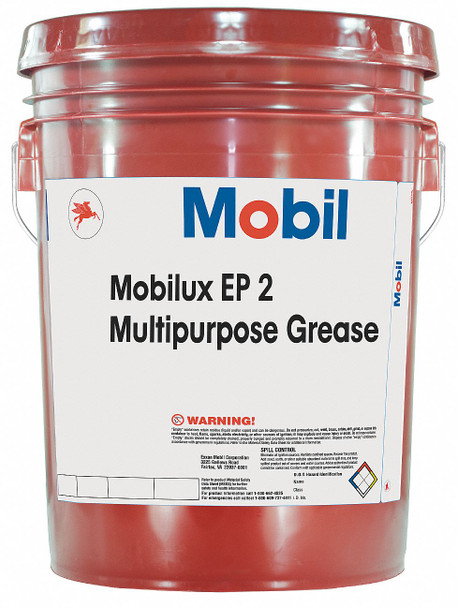Impact of Lubricant Quality on Machinery Performance
Key Takeaway
- Enhanced Efficiency: High-quality lubricants reduce friction and wear, significantly improving machinery efficiency and ensuring smoother operation, which can lead to lower energy consumption.
- Extended Equipment Lifespan: Using superior lubricants helps prevent corrosion, overheating, and component damage, ultimately extending the lifespan of machinery and reducing maintenance costs.
- Optimal Performance Under Extreme Conditions: Quality lubricants are designed to maintain their properties in extreme temperatures and pressures, ensuring reliable performance in challenging operating environments.
- Reduced Downtime: Investing in high-quality lubricants minimizes the risk of breakdowns and unscheduled maintenance, leading to increased productivity and reduced downtime in industrial operations.
Introduction
Lubricants play a critical role in ensuring the smooth operation of machinery across industries. They serve as protective agents, reducing friction between moving parts, managing heat, and preventing contaminants from causing damage.
The quality of lubricants plays a critical role in the performance and longevity of machinery. High-quality lubricants reduce friction between moving parts, minimizing wear and tear, and preventing overheating, which can cause severe damage to components. For example, synthetic oils, such as Mobil 1 and Castrol EDGE, offer superior protection under extreme temperatures, enhancing engine efficiency and extending service intervals.
Conversely, low-quality lubricants may break down more quickly, leading to increased friction, premature wear, and potential equipment failure. Regular use of high-grade lubricants, such as Shell Helix Ultra or Valvoline Full Synthetic, ensures optimal machinery performance and reduces maintenance costs.
Total Azolla ZS 68 205L Drum
Types of Lubricants
Lubricants can be classified into various categories based on their composition and intended applications. The most common types include:
1. Oils: Widely used in industrial machinery, oils provide a fluid layer between moving parts, reducing wear and tear. Examples include mineral oils, synthetic oils, and bio-based oils.
2. Greases: A combination of oil and a thickening agent, greases are typically used where oil retention is difficult, such as in bearings or gears. They offer better adhesion and are ideal for components that require long-term lubrication.
3. Synthetic Lubricants: These are engineered to perform better under extreme conditions such as high temperatures or heavy loads. Synthetic lubricants offer superior protection compared to their mineral oil counterparts.
Each lubricant type has specific applications based on the machinery’s operating conditions, load, and environment. Understanding these distinctions is crucial for selecting the right lubricant for optimal machinery performance.
Role of Lubricants in Machinery Performance
Lubricants serve several essential functions in machinery. These include:
1. Friction Reduction: By forming a protective layer between moving parts, lubricants reduce friction, which helps lower wear and tear, thereby extending the machinery’s lifespan.
2. Protection Against Wear: Quality lubricants provide a barrier that prevents metal-to-metal contact, minimizing abrasion and damage to components.
3. Temperature Control: Lubricants help dissipate heat generated by machinery during operation, maintaining optimal temperatures and preventing overheating.
4. Contaminant Removal: As machinery operates, contaminants like dirt and debris can accumulate in the system. Lubricants help carry away these contaminants, keeping machinery clean and functioning smoothly.
The effectiveness of lubrication in these areas is directly linked to the quality of the lubricant used, which can either enhance or compromise machinery performance.
Shell Argina S3-40
Impact of Low-Quality Lubricants on Machinery
Using low-quality lubricants can have serious repercussions on machinery performance. These issues include:
1. Increased Wear and Premature Failure: Low-quality lubricants may not provide adequate protection against friction and wear, leading to premature damage and failure of components.
2. Higher Friction and Heat Generation: Poor-quality lubricants often fail to reduce friction effectively, resulting in excessive heat buildup. Over time, this can lead to overheating and eventual equipment breakdown.
3. Contaminant Buildup: Low-quality lubricants are less effective at removing contaminants, which can accumulate and cause blockages or wear on machinery components, further decreasing performance.
4. Reduced Machinery Lifespan: When machines are subjected to excessive friction, heat, and contamination, their overall lifespan is significantly shortened, resulting in higher replacement and maintenance costs.
Using low-quality lubricants may seem like a cost-saving measure initially, but the long-term consequences—such as increased maintenance frequency, operational inefficiencies, and premature equipment failure—can far outweigh any short-term savings.
Benefits of High-Quality Lubricants
Investing in high-quality lubricants brings numerous advantages to machinery performance, operational efficiency, and overall equipment life:
1. Enhanced Machinery Performance: High-quality lubricants provide superior friction reduction, ensuring smoother operation and minimizing component wear. This leads to more efficient machinery, as energy loss due to friction is reduced.
2. Extended Equipment Lifespan: With better protection against wear, corrosion, and contaminants, high-quality lubricants help extend the life of machinery. This reduces the need for frequent part replacements and ensures long-term equipment reliability.
3. Improved Energy Efficiency: Lubricants with higher quality often feature better thermal stability, which helps maintain optimal operating temperatures. This reduces the energy required to cool machinery, enhancing overall energy efficiency.
4. Minimized Downtime and Lower Maintenance Costs: High-quality lubricants reduce the frequency of mechanical breakdowns and the need for unplanned maintenance. As a result, machinery remains operational for longer periods, reducing downtime and associated costs.
Mobilux EP 2 Grease Oil
Case Studies: Real-World Examples
Here are a few real-world examples that illustrate the impact of lubricant quality on machinery performance:
1. A manufacturing company using low-grade oil in their machinery experienced frequent equipment overheating and unplanned shutdowns. After switching to a premium synthetic lubricant, they observed a significant reduction in overheating issues and a 20% increase in equipment uptime.
2. A large construction company experienced excessive wear on its fleet of excavators due to poor lubrication. By transitioning to a high-performance grease, they were able to extend the lifespan of their equipment and cut maintenance costs by 30%.
These examples underscore the importance of choosing the right lubricant to maximize machinery performance and reduce long-term expenses.
How to Assess Lubricant Quality
To ensure you’re using high-quality lubricants, it’s important to assess the following key parameters:
1. Viscosity: The right viscosity ensures proper film thickness between moving parts, preventing metal-to-metal contact. Always use lubricants with a viscosity suited to your machinery’s operating conditions.
2. Stability: Lubricants should maintain their performance under varying temperatures and loads. High-quality lubricants exhibit excellent stability, ensuring consistent performance over time.
3. Additives: Additives enhance the base oil’s properties by providing anti-wear, anti-corrosion, and anti-oxidation benefits. The type and quality of additives used in a lubricant can significantly impact its overall performance.
4. Testing and Certifications: Look for lubricants that comply with industry standards, such as ASTM or ISO certifications. These certifications ensure that the lubricant meets the required performance and safety benchmarks.
Regularly testing and monitoring lubricant performance through oil analysis can also help detect early signs of contamination or degradation, allowing for proactive maintenance.
Shell Helix HX7 Synthetic engine Oil
Best Practices for Lubricant Management
To get the most out of high-quality lubricants, it’s essential to implement proper management practices. These include:
1. Proper Storage and Handling: Store lubricants in a clean, dry environment away from extreme temperatures and contaminants. Always handle them with care to prevent contamination during use.
2. Scheduled Lubrication: Follow a regular lubrication schedule based on the manufacturer’s guidelines and the operating conditions of your machinery. Over-lubrication or under-lubrication can both cause issues, so precise timing is crucial.
3. Preventive Maintenance: Regularly inspect and replace lubricants as needed to ensure optimal performance. Monitoring lubricant conditions through oil analysis helps detect potential problems early, such as contamination or degradation.
4. Training and Education: Ensure that your maintenance team is properly trained in the selection, application, and management of lubricants. Misapplication of lubricants can lead to poor performance and equipment damage.
Frequently Asked Questions
1. Why is lubricant quality important for machinery?
High-quality lubricants reduce friction, protect against wear, manage heat, and remove contaminants. This enhances machinery performance, reduces downtime, and extends the lifespan of equipment.
2. What are the signs of using poor-quality lubricants?
Signs include increased friction, excessive heat, frequent breakdowns, contamination buildup, and higher maintenance costs due to premature component wear.
3. How often should lubricants be replaced?
It depends on the machinery and its operating conditions, but regular oil analysis can help determine when a lubricant needs replacement. Following manufacturer guidelines for lubrication intervals is also recommended.
4. What are the benefits of synthetic lubricants?
Synthetic lubricants offer superior stability under extreme conditions, better protection against wear, and improved energy efficiency. They are often more durable and provide longer service life compared to mineral oils.
5. Can using the wrong lubricant damage machinery?
Yes, using the wrong lubricant can cause increased wear, improper lubrication, and even component failure, leading to costly repairs and downtime.
Mobil Super 1000 20W50- 4liters Lubricant
Related Articles
Choosing the Right Lubricant: A Guide for Various Industrial Applications
How to Select Lubricants for Different Industrial Applications
Conclusion
In conclusion, the quality of lubricants plays a vital role in determining the performance, efficiency, and longevity of machinery. High-quality lubricants not only protect against wear and tear but also improve energy efficiency, reduce downtime, and lower maintenance costs. In contrast, poor-quality lubricants can result in higher friction, overheating, and contamination, leading to frequent breakdowns and reduced equipment lifespan. By selecting the right lubricant and following best practices for lubrication management, industries can optimize their machinery performance and achieve long-term savings.
Looking to enhance your machinery's performance with high-quality lubricants? Visit GZ Industrial Supplies to explore our wide range of premium lubricants designed for various industrial applications. Ensure optimal performance and protect your equipment today!













